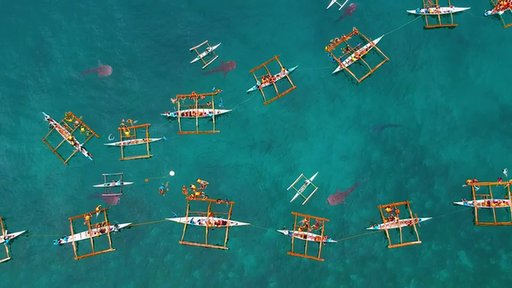AgainstWhaleSharkTourism
ChangingBehaviors
Somescientistsworrythatfeedingwhalesharksfrom6 a.m.tonoon364 daysayearmightbedisruptive.Thenaturalbehaviorofawhalesharkistotravellong distances.
Whalesharkscanmigrateasfar as 12,800 kilometers(8,000 miles)inathree-yearperiod.InOslob,mostofthewhalesharksmoveonafterafewdays.Butaboutfourpercentstayyear-round.Scientistsdon’tknowwhysomestayandothersgo.Isitapatterncreatedbyfeedingthewhale sharks?
Researchersworrythatthesharksmaystarttodependuponpeopleforfood.Theymaybecomelesswaryofpeopleand boats.

Atouristtouchesthefinofawhalesharkwhilediving.Touristsarenotsupposedtotouchthem,butmany do.
Alargerproblemmightbethatthesharksassociateboatswithfood.ManyofOslob’swhalesharkshavecutscausedbypropellers.Yet,thetouristcanoesonlyhavepaddles.Thesharksmaybedrawntoboatswithpropellershopingforatastyhandout.Instead,theyget hurt.
Touristsaretoldnottowearsunblockinthewater.Itisachemicaltoxictowildlife.Yet,manyswimmersbreaktherules.Whatdoesthatmeanforthewhalesharks?Istheinteractionwithpeopleaproblem?Nooneissure yet.
Thisisanaerialviewoftouristsinthewaterandinboats,interactingwithwhale sharks.
Whalesharktourismiscontroversial.Isitworthpursuing?Or not?
